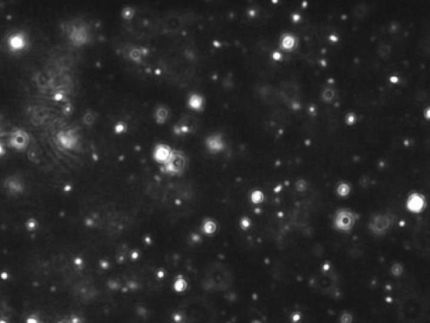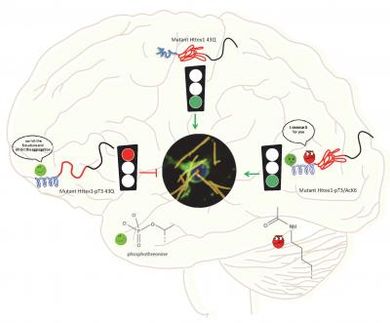Unusual protein modification involved in muscular dystrophy, cancer
Advertisement
With the discovery of a new type of chemical modification on an important muscle protein, a University of Iowa study improves understanding of certain muscular dystrophies and could potentially lead to new treatments for the conditions. The findings, which appear in Science , may also have implications for detecting metastasizing cancer cells.
After they are initially made, most proteins are modified through the addition of sugar chains, fats or other chemical groups. These modifications can completely change how a protein works and where it is located in the body. Disruption of these modifications can alter protein function, too, and can lead to disease.
The UI study focused on dystroglycan, a cell membrane protein that is disrupted in many forms of muscular dystrophy. Normal dystroglycan is modified with a unique sugar chain that allows the protein to "glue" muscle membranes to the basal lamina - a tough layer of extracellular proteins. This arrangement reinforces the fragile muscle membrane and prevents small tears that occur naturally from expanding and damaging the membrane.
Recent work, including studies by the UI team, show that disrupting dystroglycan's ability to attach to the basal lamina causes congenital muscular dystrophies and also leads to cancer progression in epithelial cell cancer. In these conditions, the dystroglycan sugar chain is incompletely or incorrectly assembled and the dystroglycan cannot bind tightly to laminin.
"Dystroglycan is a complex and unusual glycoprotein. It is heavily covered with many types of sugars. We wanted to know the shape and make up of the unique sugar chain that allows dystroglycan to bind to laminin," said study leader Kevin Campbell, Ph.D., professor and head of molecular physiology and biophysics at the UI Roy J. and Lucille A. Carver College of Medicine and a Howard Hughes Medical Institute investigator.
Lead study author Takako Yoshida-Moriguchi, Ph.D., a postdoctoral researcher in Campbell's lab, used a combination of biochemical methods and chemical and structure analysis to determine that a critical link within the sugar chain involves a phosphate group. This type of link is found in yeast and fungi but has not previously been found in higher organisms like mammals.
"This phosphate link is very unusual, which may explain why the actual structure of dystroglycan's laminin-binding sugar chain has been a mystery for many years despite the efforts of numerous research teams," said Campbell, who also holds the Roy J. Carver Chair of Physiology and Biophysics. "The findings help explain what is happening in congenital muscular dystrophies where the dystroglycan sugar chain is truncated and ends at the phosphate. The bare phosphate does not bind laminin; it has to be further modified."
Several enzymes are involved in building the sugar chain beyond the phosphate, and mutations in these enzymes are the cause of congenital muscular dystrophies.
"If we can discover the entire structure and make up of the sugar chain beyond the phosphate link, we might be able to target some of the enzymes involved in building the sugar chain, and thus, develop therapies to treat congenital muscular dystrophies," Campbell said.
In certain cancer cells, one of these enzymes, known as LARGE, also is suppressed. Campbell speculated that loss of LARGE activity produces dystroglycan that is unable to interact with the basal lamina, which makes the cancer cells more mobile and allows them to escape into the bloodstream. The study's findings could lead to new methods for tracking metastasizing cancer cells.


























































